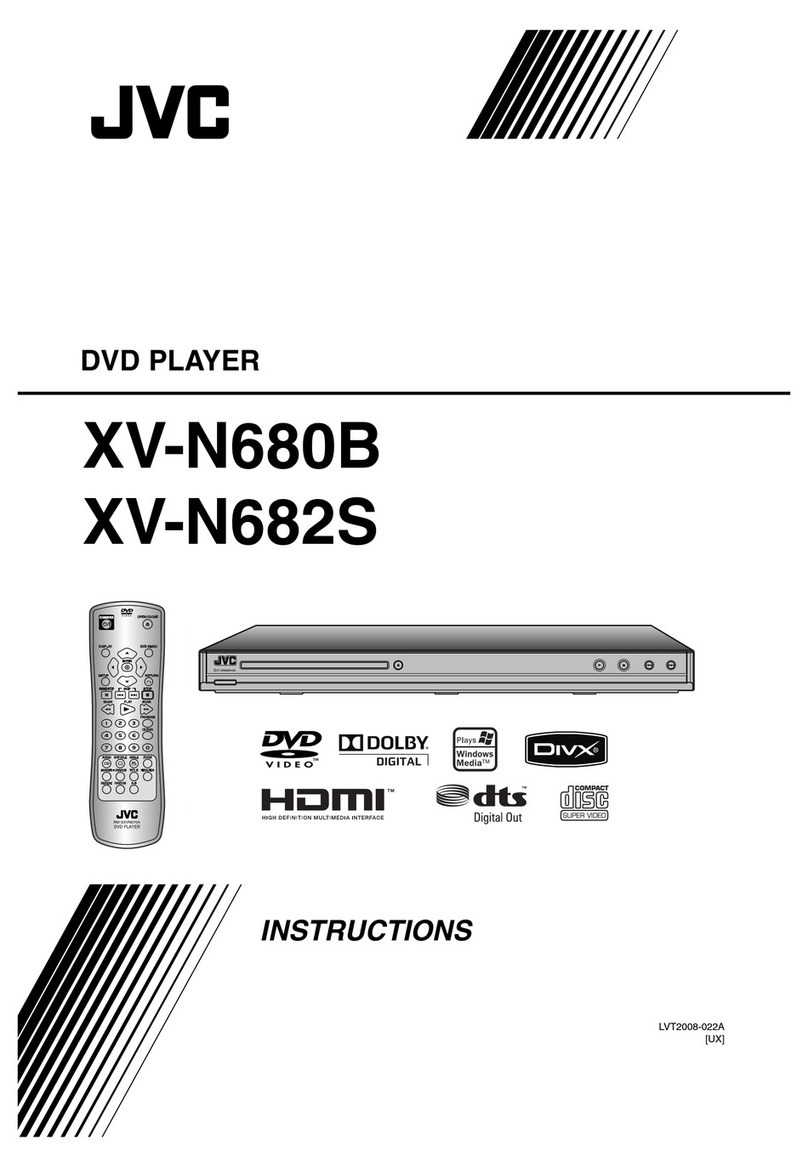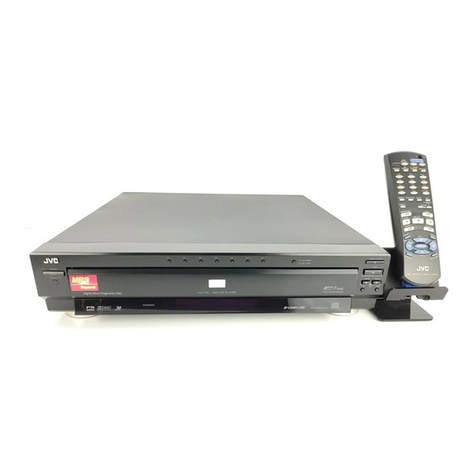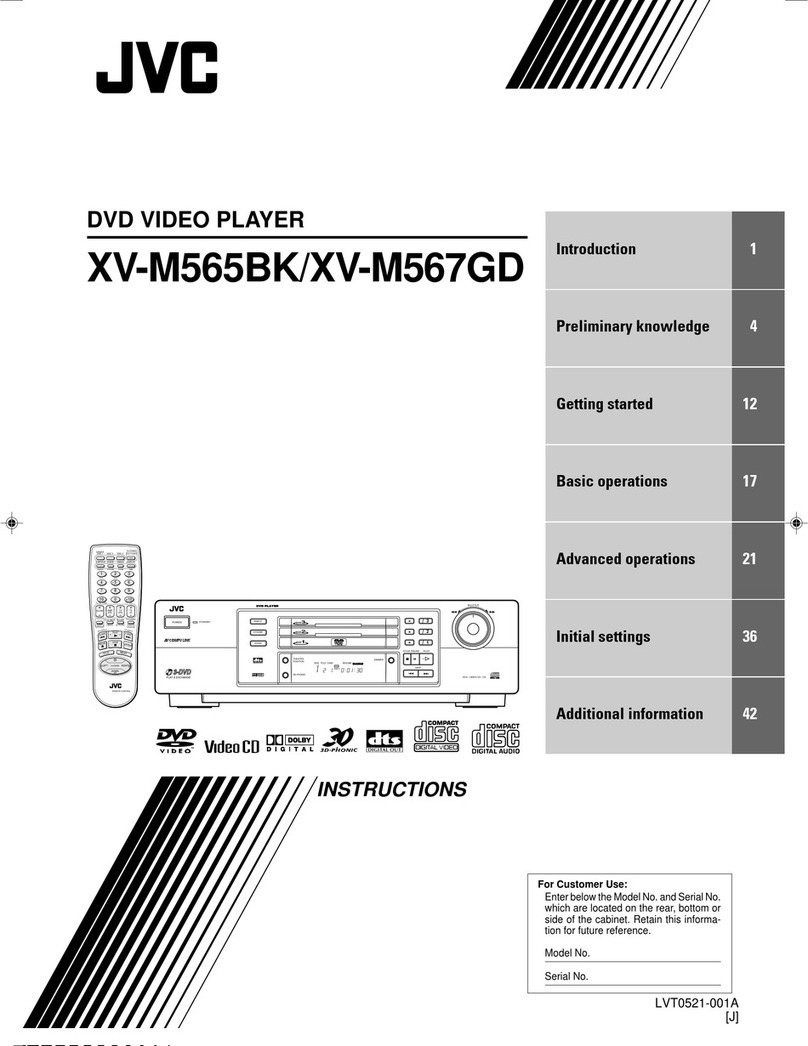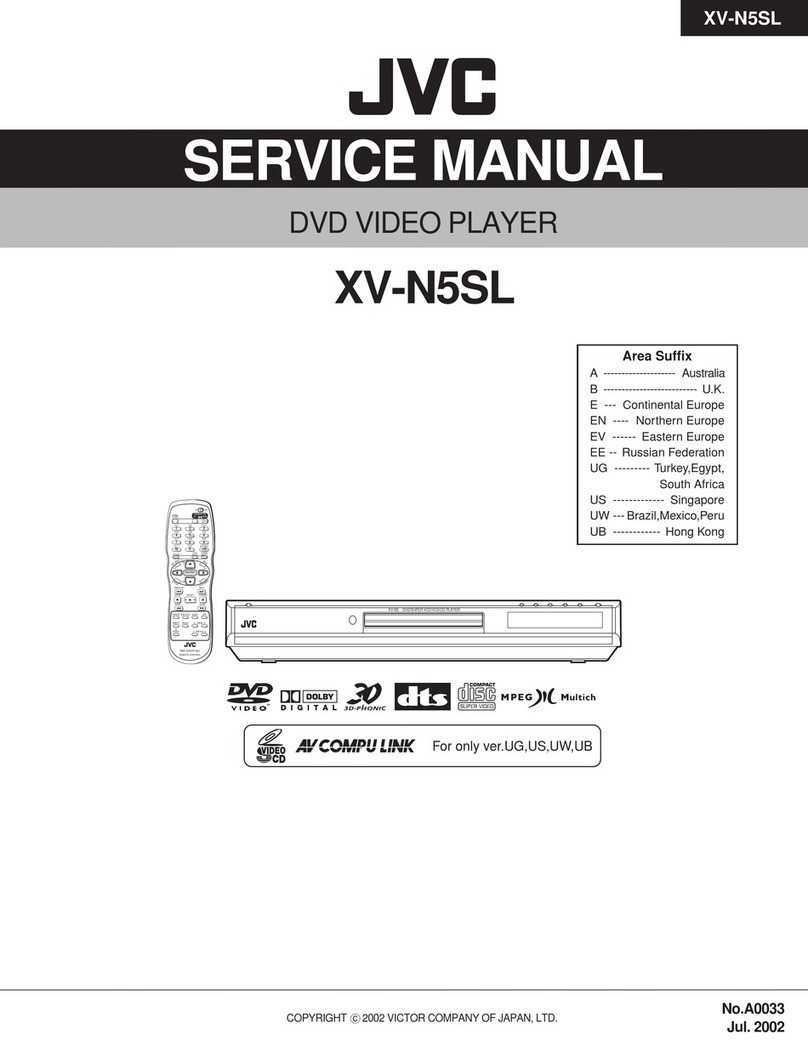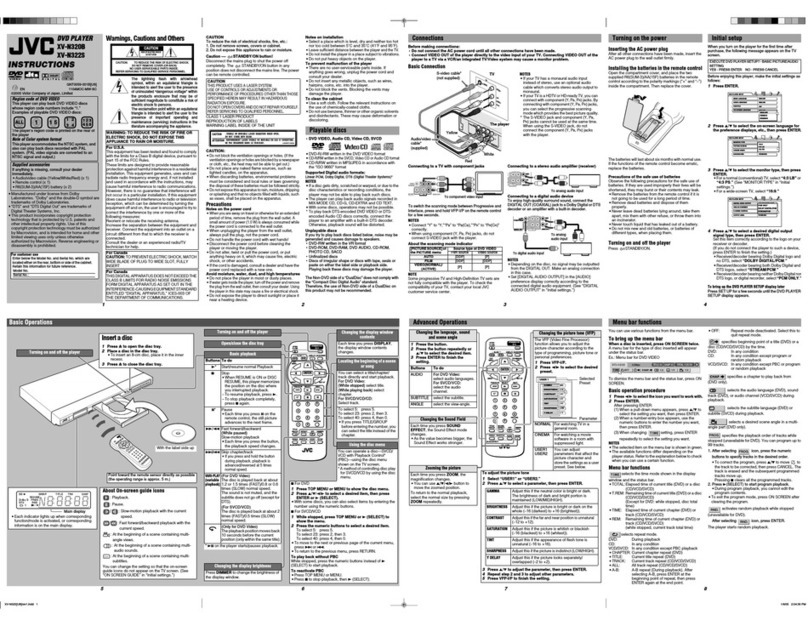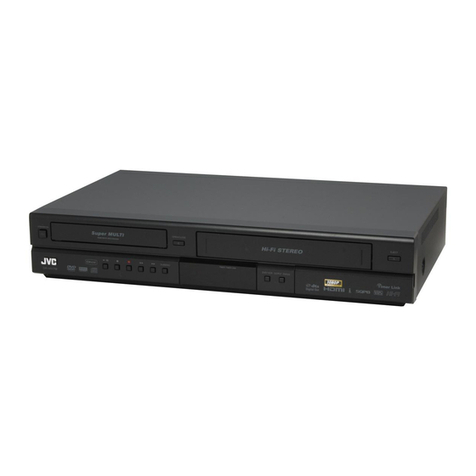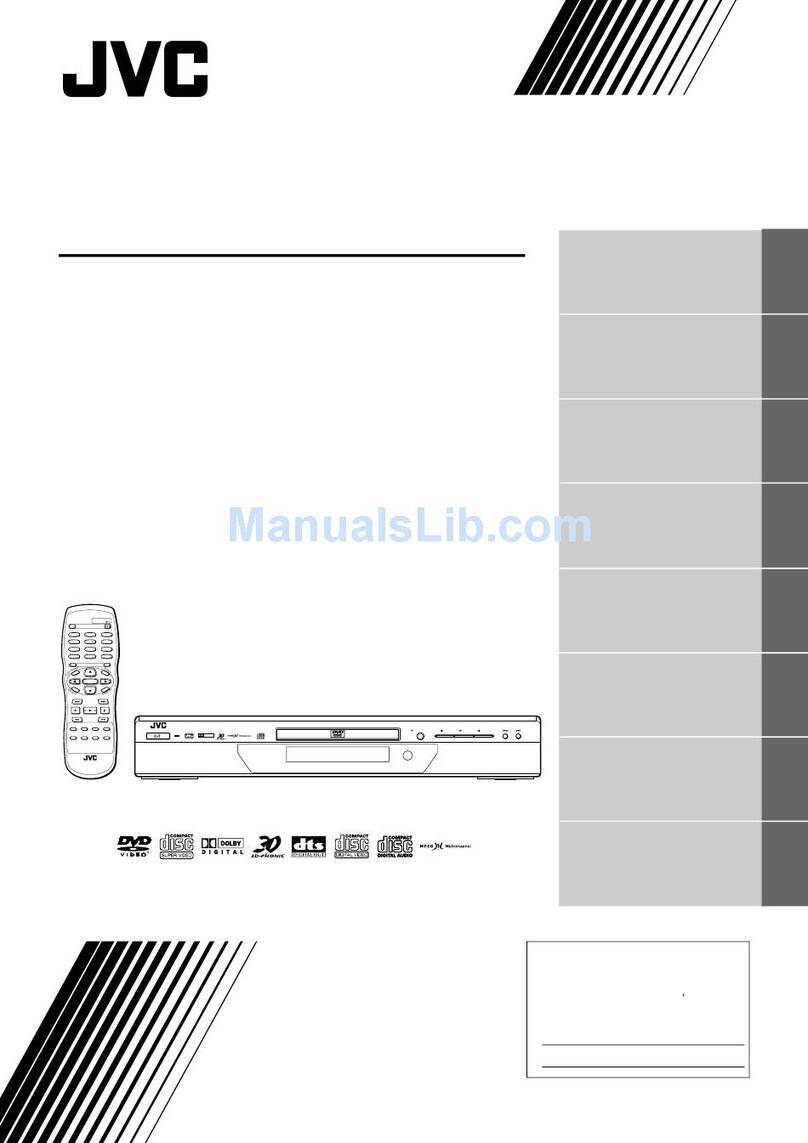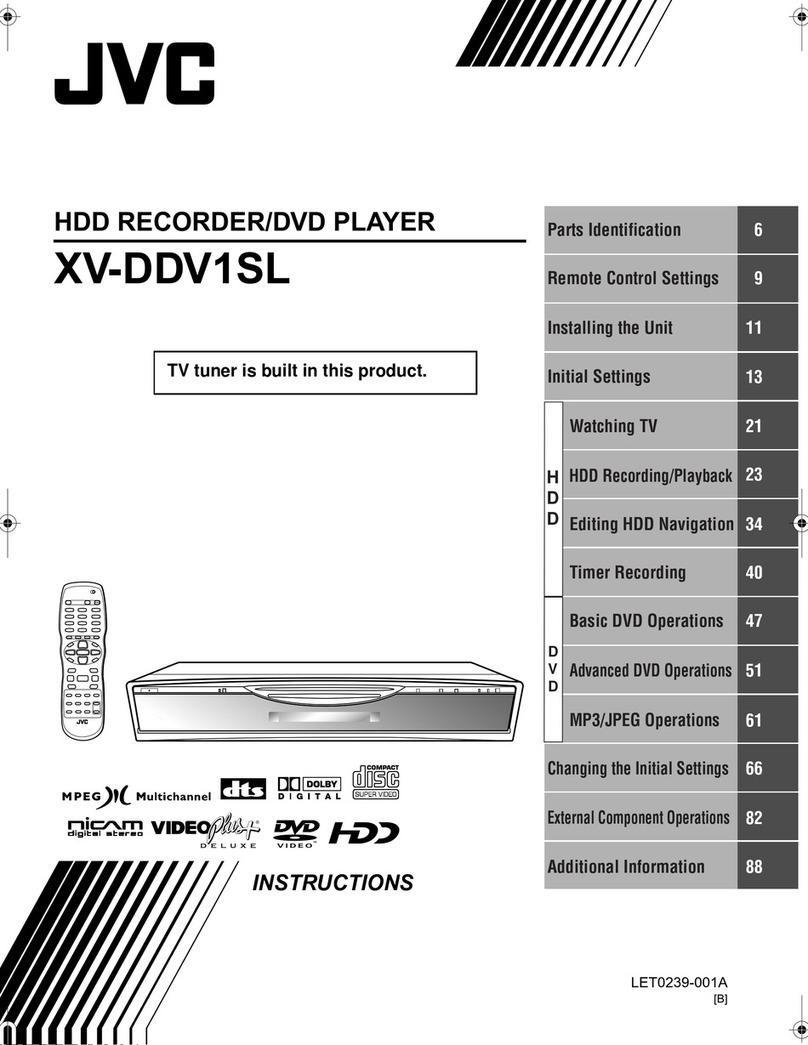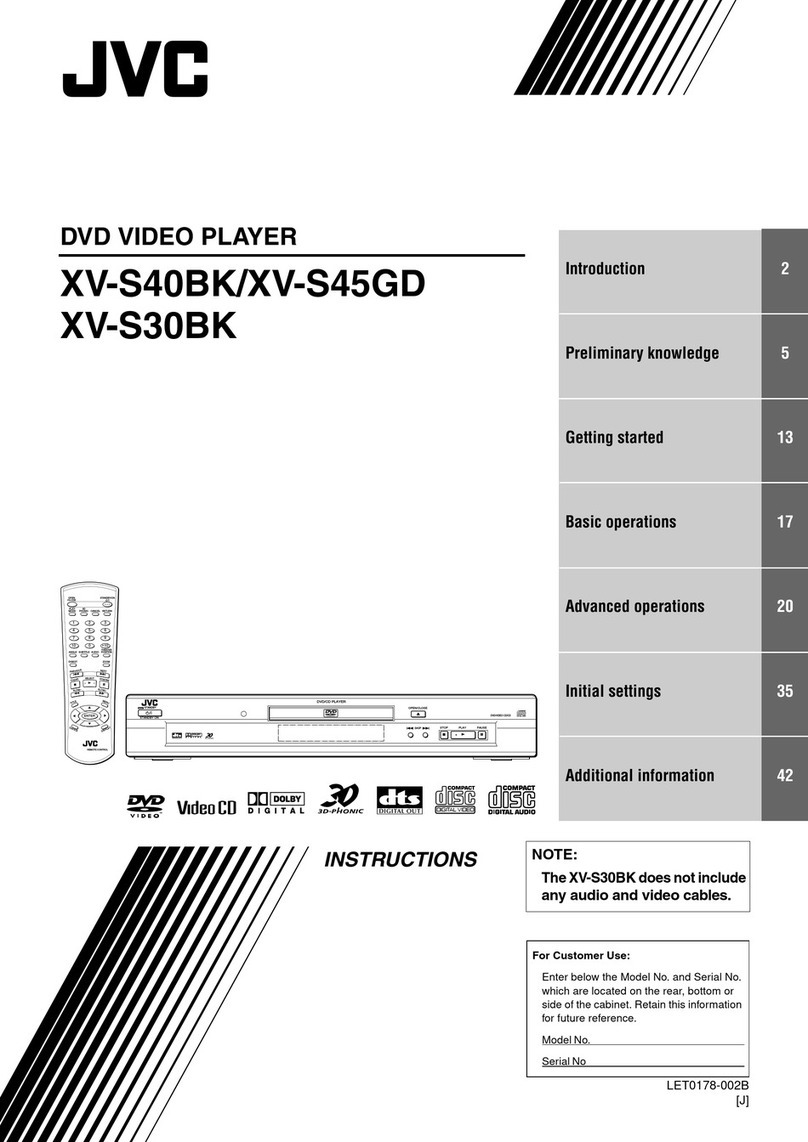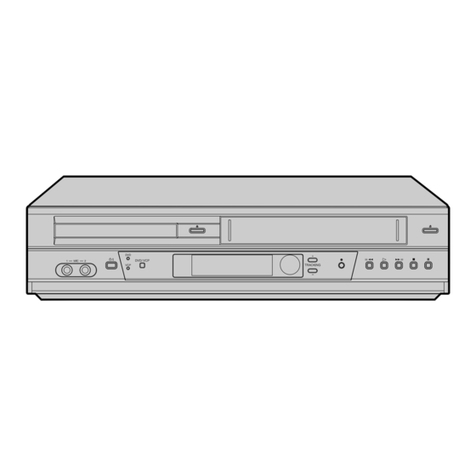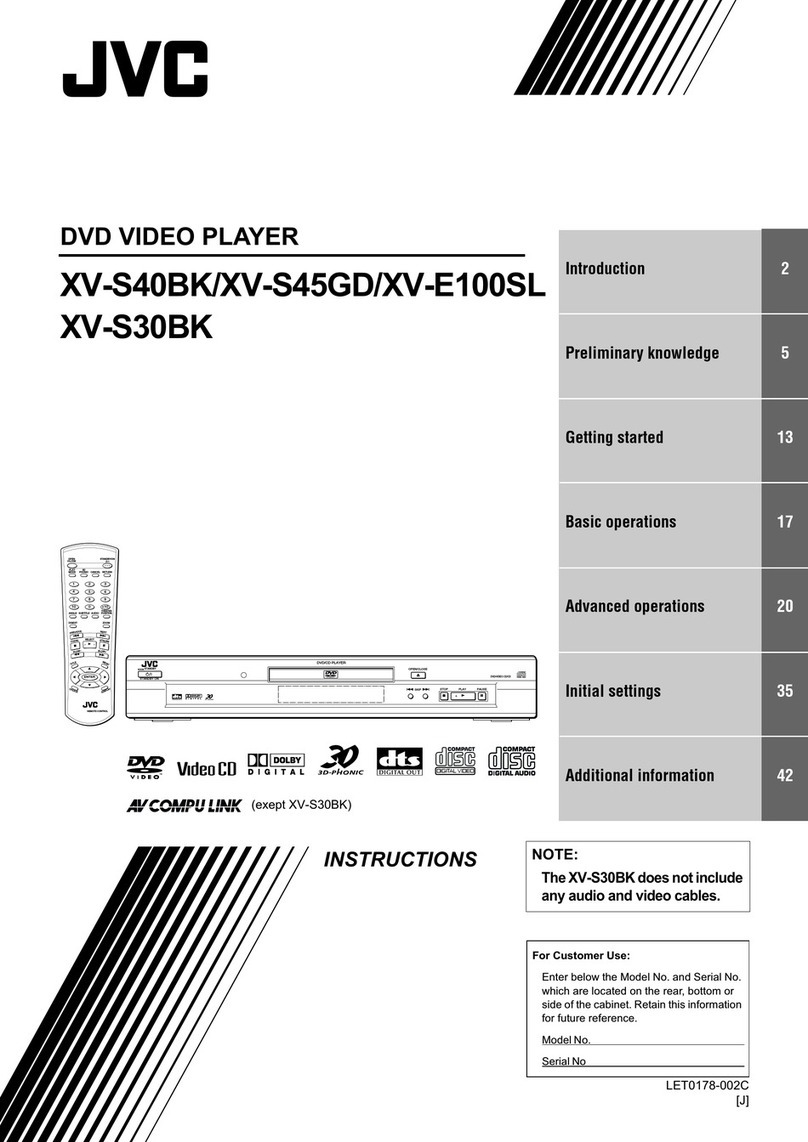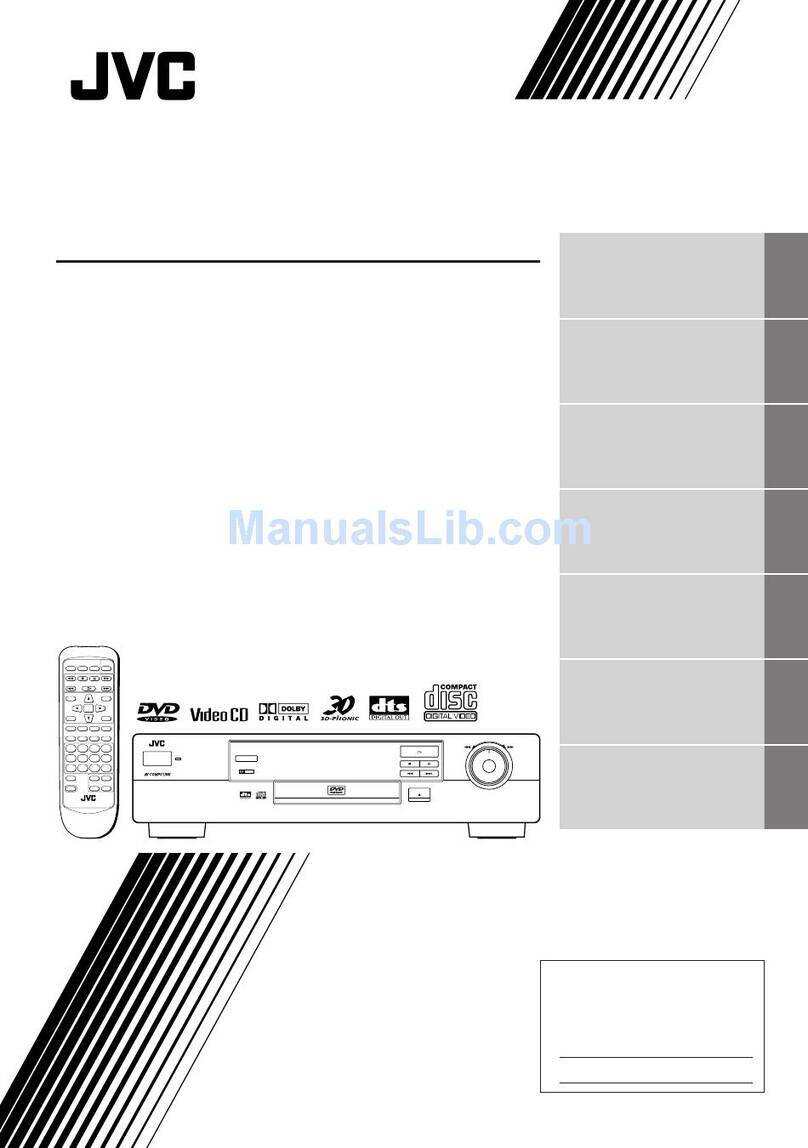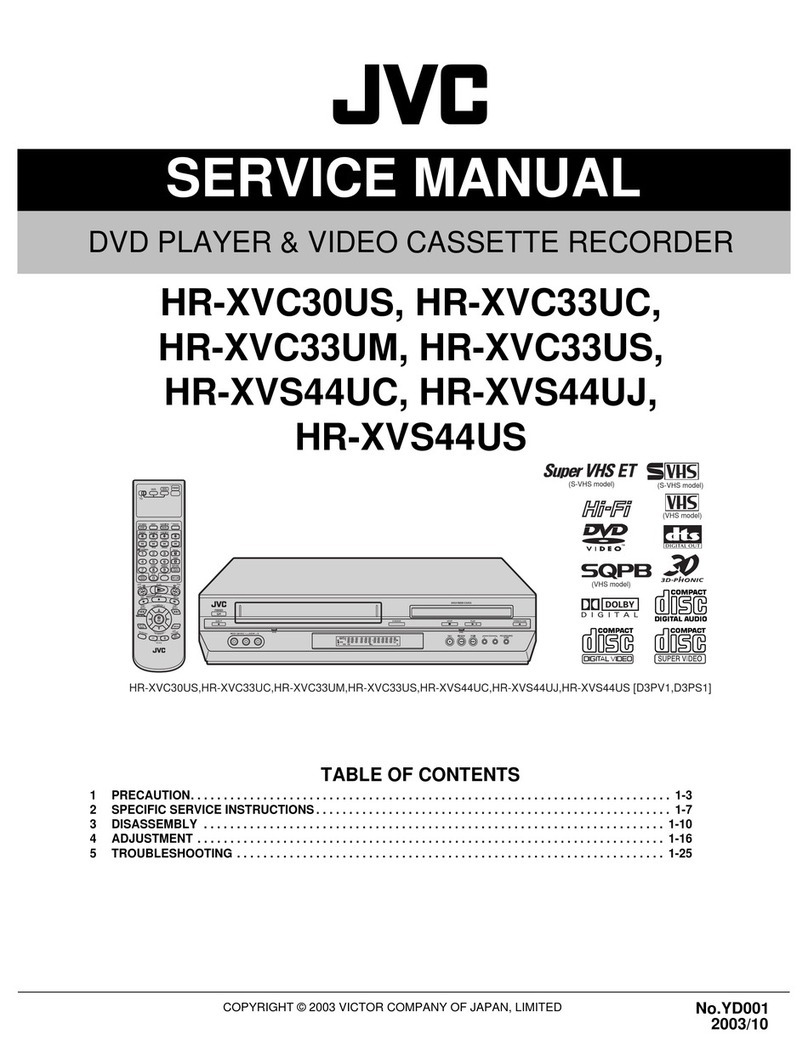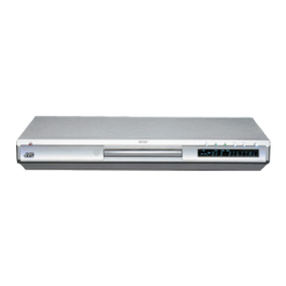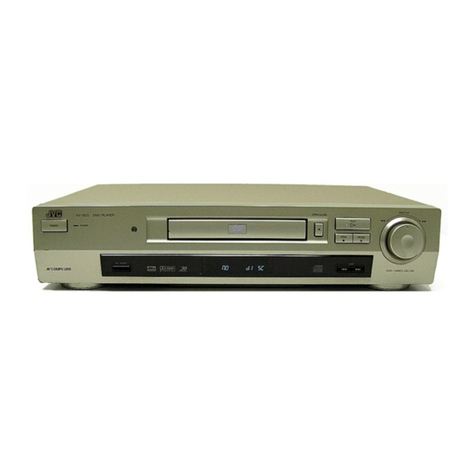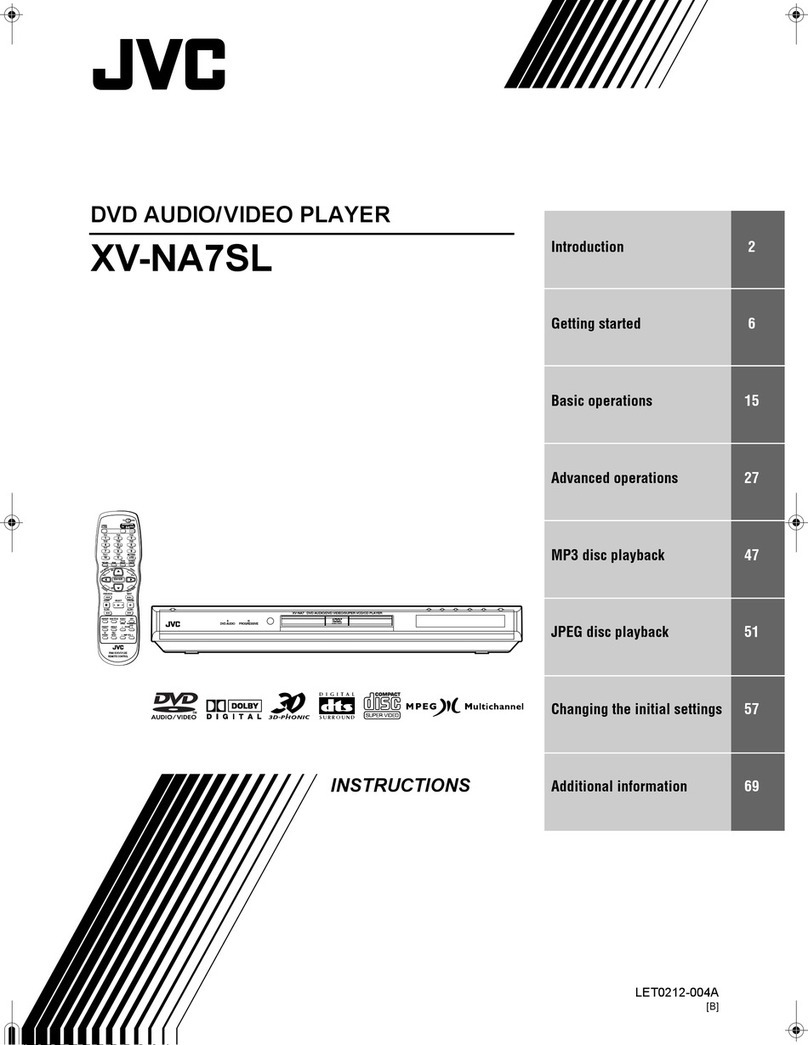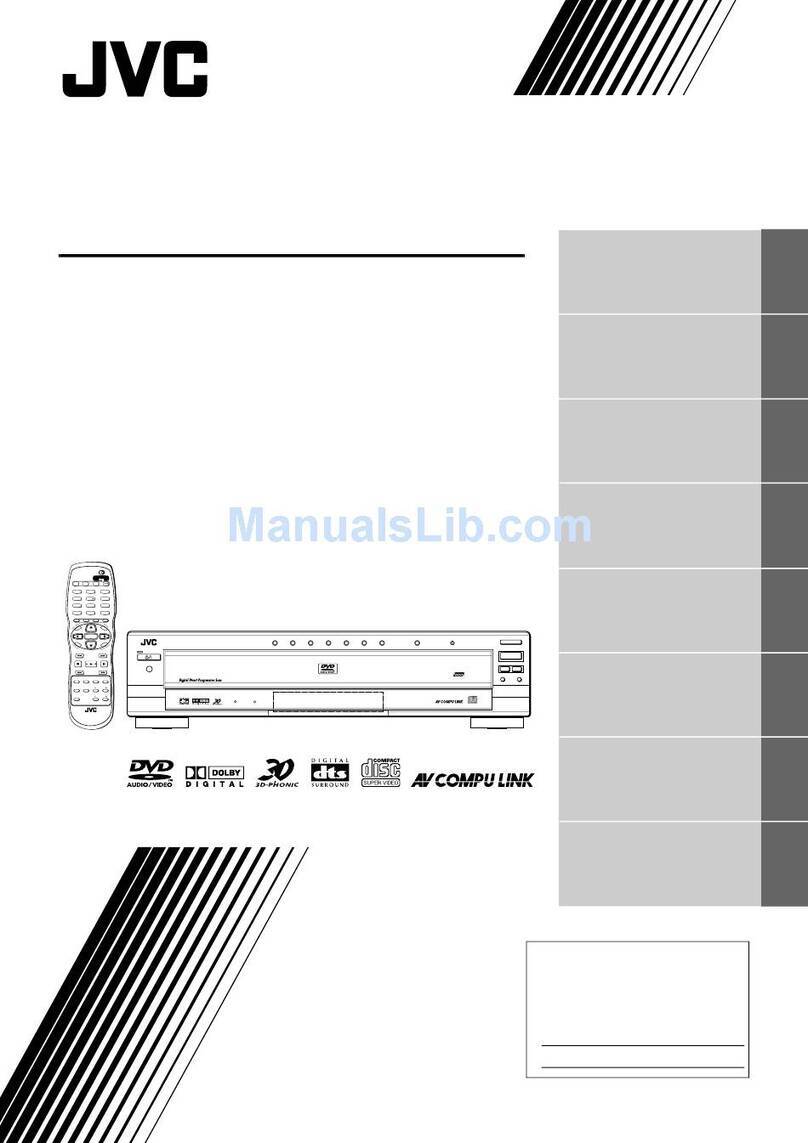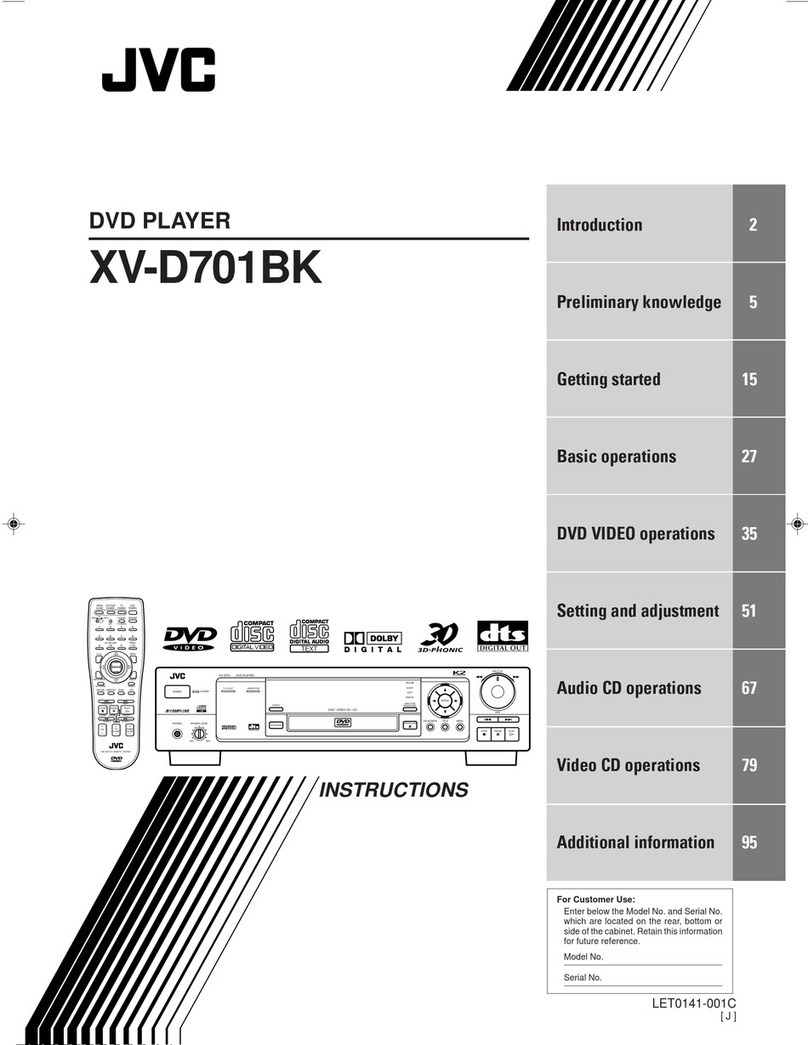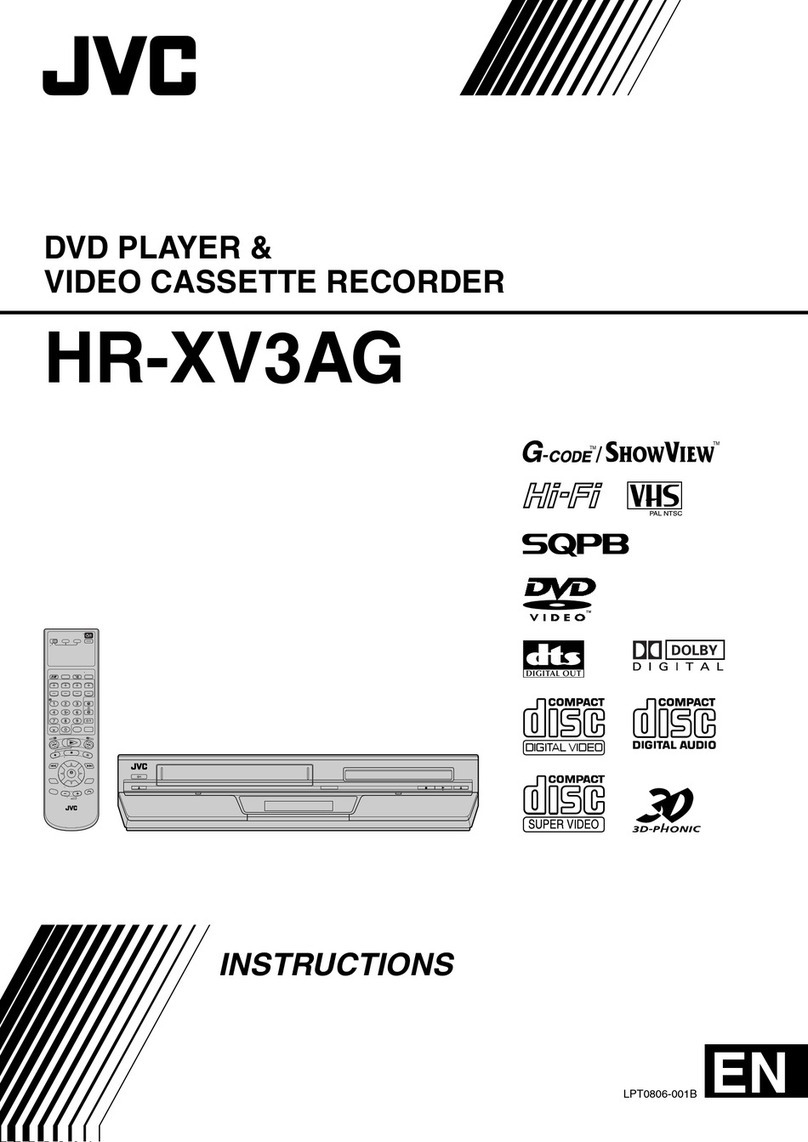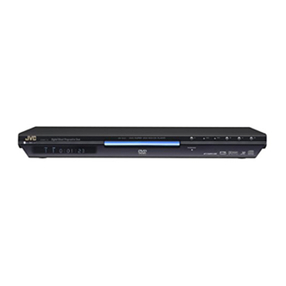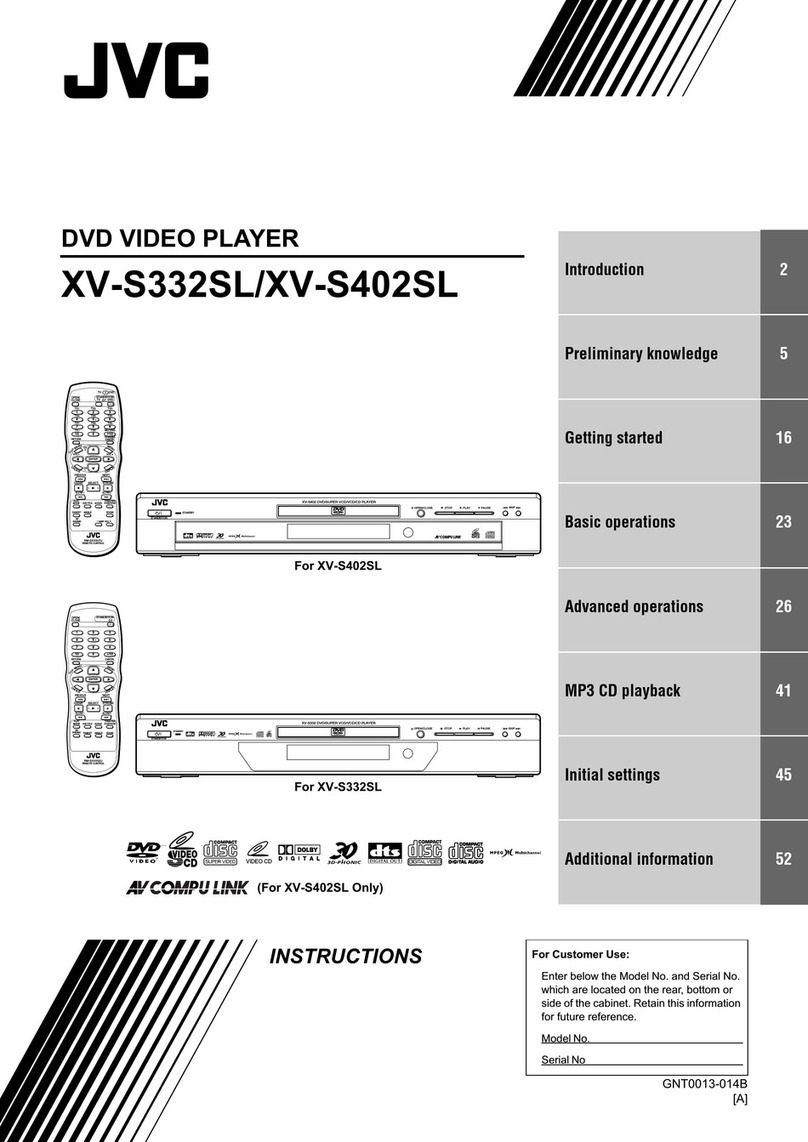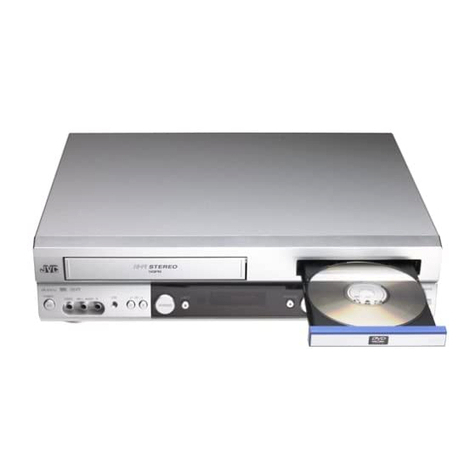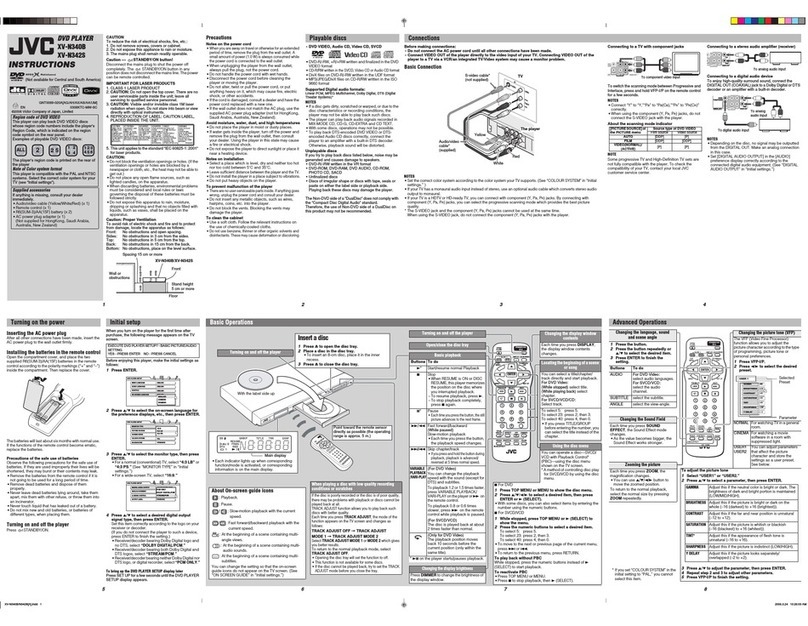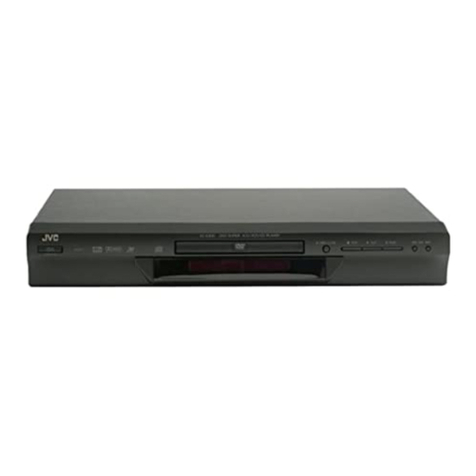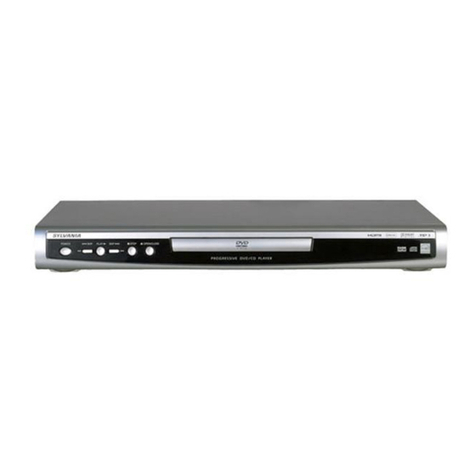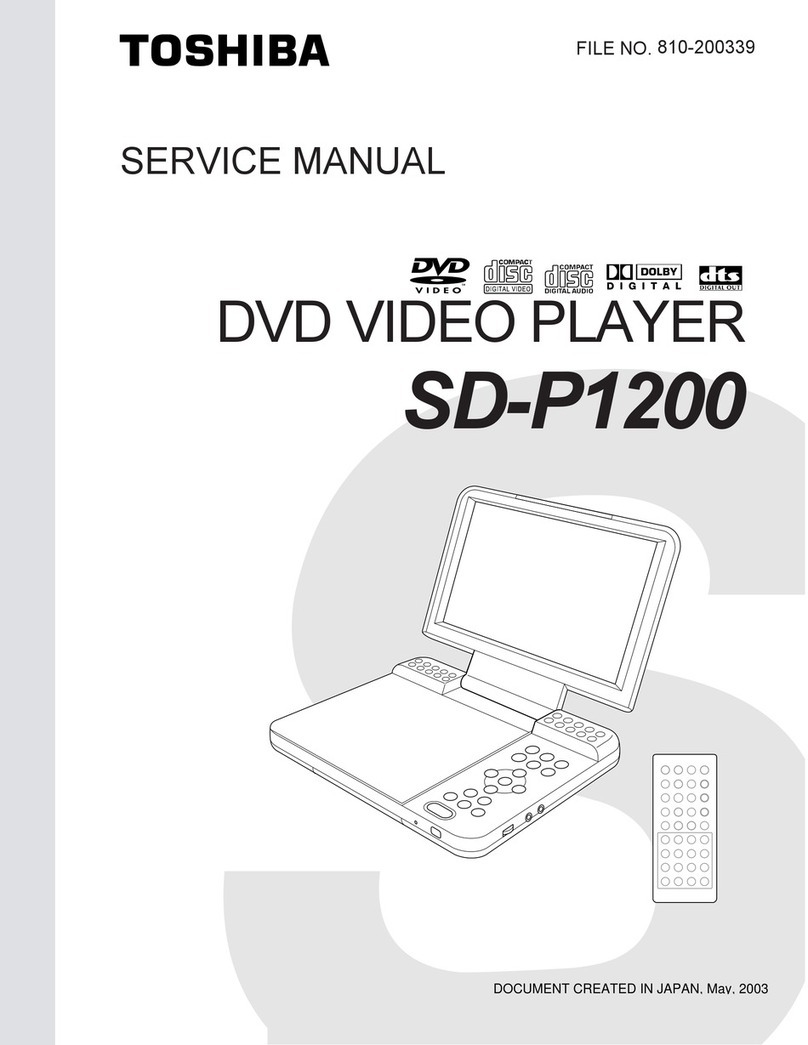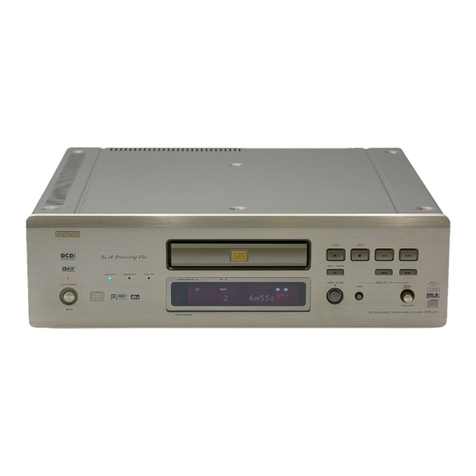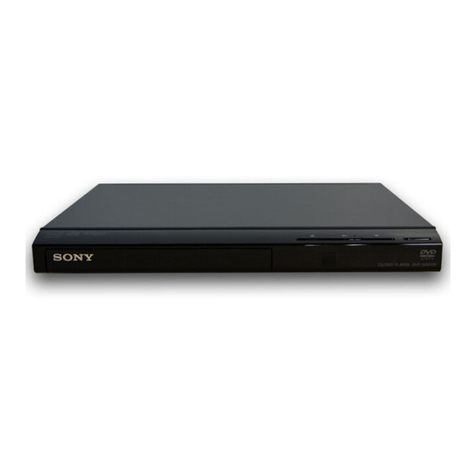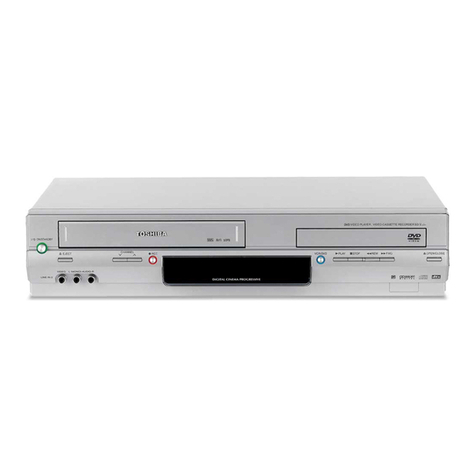
TABLE OF CONTENTS
Section Title Page Section Title Page
Important Safety Precautions
INSTRUCTIONS
DISASSEMBLY INSTRUCTIONS
1.
REMOVAL OF MECHANICAL PARTSAND P.C.BOARDS ...............
1-1
1-1 TOP CABINET AND FRONT CABINET ............................ 1-1
1-2 FLAP .................................................................................. 1-1
1-3 DECK CD AND DVD PCB .................................................1-1
1-4 POWER PCB .....................................................................1-2
1-5 VCR DECK ........................................................................1-2
1-6 VCR PCB ...........................................................................1-2
2. REMOVAL OF VCR DECK PARTS.........................................1-3
2-1 TOP BRACKET..................................................................1-3
2-2 CASSETTE HOLDER ASS’Y.............................................1-3
2-3 CASSETTE SIDE L/R ........................................................1-3
2-4 LINK UNIT .........................................................................1-3
2-5 LINK LEVER / FLAP LEVER .............................................1-3
2-6 LOADING MOTOR / WORM..............................................1-4
2-7 TENSION ASS’Y................................................................1-4
2-8 T BRAKE ARM / T BRAKE BAND......................................1-5
2-9
S REEL / T REEL / IDLER ARM ASS’Y / IDLER GEAR ..............
1-5
2-10
CASSETTE OPENER / PINCH ROLLER BLOCK / P5ARM ASS’Y.............
1-6
2-11 A/C HEAD ........................................................................1-6
2-12 FE HEAD .........................................................................1-6
2-13 CYLINDER UNITASS’Y ..................................................1-6
2-14 CAPSTAN DD UNIT.........................................................1-7
2-15
MAIN CAM / PINCH ROLLER CAM / JOINT GEAR ............
1-7
2-16 LOADING GEAR S/T UNIT..............................................1-7
2-17
CLUTCH ASS’Y / RING SPRING / CLUTCH LEVER / CLUTCH GEAR ...............
1-8
2-18
CASSETTE GUIDE POST / INCLINED BASE S/T UNIT / P4 CAP..............
1-8
3.
REMOVALAND INSTALLATION OF FLAT PACKAGE IC ...........
1-9
REMOVAL................................................................................1-9
INSTALLATION ......................................................................1-10
KEY TO ABBREVIATIONS ...................................................... 1-11
SERVICE MODE LIST..............................................................1-13
WHEN “N” IS ALWAYS BEING DISPLAYED ON THE TV MONITOR .............
1-13
PARENTAL CONTROL - RATING LEVEL 4-DIGIT SECURITY CODE CANNCELLATION ................
1-13
WHEN REPLACING EEPROM(MEMORY) IC .........................1-14
PREVENTIVE CHECKS AND SERVICE INTERVALS.............1-15
CONFIRMATION OF HOURS USED .......................................1-15
CLEANING ...............................................................................1-15
SERVICING FIXTURES AND TOOLS......................................1-16
MECHANISM ADJUSTMENT PARTS LOCATION GUIDE............
1-16
MECHANICAL ADJUSTMENT ................................................1-17
TAPE REMOVAL METHODAT NO POWER SUPPLY ..........1-17
DISC REMOVAL METHODAT NO POWER SUPPLY...........1-17
1. CONFIRMATION AND ADJUSTMENT .................................1-17
1-1
CONFIRMATION AND ADJUSTMENT OF TENSION POST POSITION ..............
1-17
1-2 CONFIRMATION OF PLAYBACK TORQUE AND
BACK TENSION TORQUE DURING PLAYBACK...........1-17
1-3 CONFIRMATION OF VSR TORQUE...............................1-17
1-4 CONFIRMATION OF REEL BRAKE TORQUE................1-18
2. CONFIRMATION AND ADJUSTMENT OF TAPE
RUNNING MECHANISM .................................................. 1-18
2-1 GUIDE ROLLER ..............................................................1-18
2-2
CONFIRMATION AND ADJUSTMENT OF AUDIO/CONTROL HEAD ................
1-19
2-3
TAPE RUNNING ADJUSTMENT(X-VALUE ADJUSTMENT) .................
1-19
ELECTRICAL ADJUSTMENTS ...............................................1-20
1. BASIC ADJUSMENT ............................................................1-20
1-1 SWITCHING POINT ........................................................1-20
ELECTRICAL ADJUSTMENT PARTS LOCATION GUIDE ............
1-20
IC DESCRIPTIONS ..................................................................1-21
SERVO TIMING CHART ..........................................................1-32
MECHANISM TIMING CHART.................................................1-33
TROUBLE SHOOTING GUIDE ................................................1-34
(VCR SECTION) ....................................................................1-34
(DVD SECTION) ....................................................................1-57
CHARTS AND DIAGRAMS
INTERCONNECTION DIAGRAM ............................................2-1
POWER SCHEMATIC DIAGRAM ...........................................2-3
READ CHANNEL SCHEMTAIC DIAGRAM .............................2-5
DSP SCHEMATIC DIAGRAM..................................................2-7
MPEG SCHEMATIC DIAGRAM ..............................................2-9
MEMORY SCHEMATIC DIAGRAM .......................................2-11
AUDIO/VIDEO SCHEMATIC DIAGRAM ...............................2-13
SYSCON1 SCHEMATIC DIAGRAM ......................................2-15
Y/C/AUDIO/HEAD AMP SCHEMATIC DIAGRAM .................2-17
VCR SYSCON SCHEMATIC DIAGRAM ...............................2-19
TUNER\/JACK SCHEMATIC DIAGRAM ...............................2-21
REGULATOR SCHEMATIC DIAGRAM.................................2-23
DISPLAY SCHEMATIC DIARAM...........................................2-25
HI-FI/DEMODULATOR SCHEMATIC DIAGRAM ..................2-27
DVD IN/OUT SCHEMATIC DIAGRAM ..................................2-29
SUB MICOM/OSD/VPS SCHEMATIC DIAGRAM .................2-31
OPERATION SCHEMATIC DIAGRAM ..................................2-33
PRINTED CIRCUIT BOARDS VCR(INSERTED PARTS) ................
2-35
PRINTED CIRCUIT BOARDS VCR(CHIP MOUNTED PARTS) ..............
2-37
PRINTED CIRCUIT BOARDS DVD .......................................2-39
PRINTED CIRCUIT BOARDS POWER / OPERATION............
2-41
WAVEFORMS .......................................................................2-42
DVD BLOCK DIAGRAM ........................................................2-45
Y/C/AUDIO/HEAD AMP BLOCK DIAGRAM ..........................2-47
MICOM BLOCK DIAGRAM....................................................2-49
REGULATOR BLOCK DIAGRAM..........................................2-51
DISPLAY/OPERATION BLOCK DIAGRAM...........................2-53
TUNER/JACK/HI-FI/21PIN/OSD BLOCK DIAGRAM.............2-55
DVD IN/OUT BLOCK DIAGRAM ...........................................2-57
POWER BLOCK DIAGRAM ..................................................2-59
PARTS LIST
3.1 PACKING AND ACCESSORY ASSEMBLY<M1> ................ 3-1
3.2 FINAL ASSEMBLY<M2> ...................................................... 3-2
3.3 MECHANISM ASSEMBLY<M4> .......................................... 3-4
3.4 ELECTRICAL PARTS LIST.................................................. 3-7
POWER BOARD ASSEMBLY<01>.......................................... 3-7
VCR BOARD ASSEMBLY<03>.................................................3-7
OPERATION BOARD ASSEMBLY<28> .................................3-13
DVD BOARD ASSEMBLY<50>...............................................3-13
REFERENCE
GENERAL SPECIFICATIONS [HR-XV1EU-R] ........................4-1
